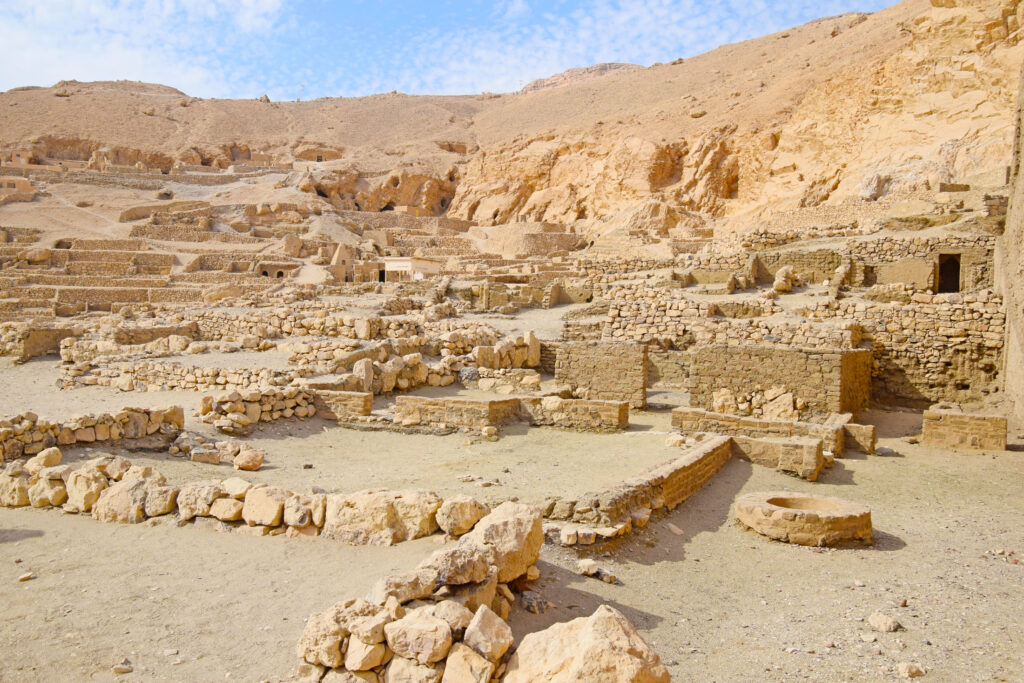Introduction
Deir el-Medina is an ancient Egyptian village that was home to the artisans who worked on the tombs in the Valley of the Kings during the New Kingdom period. Located on the west bank of the Nile in Luxor, the village was inhabited for over 400 years and is now an archaeological site that has revealed a wealth of information about daily life in the ancient world. From the hieroglyphic writings on the walls of the houses to the tools used by the craftsmen, Deir el-Medina offers a fascinating glimpse into the past.
History of Deir el-Medina
Deir el-Medina was founded around 1550 BC and was home to the workers who created the tombs of the Pharaohs in the Valley of the Kings. Known as the ‘Workmen of the Place of Truth’, the craftsmen included carpenters, masons, painters, sculptors, and stonecutters who were highly skilled in their trade. This community of artisans lived in the village for over 400 years and left behind a rich legacy of hieroglyphic writings, artwork, and tools.
The Village of Deir el-Medina
The village of Deir el-Medina was built on a plateau overlooking the Nile and was enclosed within a wall. It was laid out in an orderly fashion, with the main streets leading to the temple of the god Amun and the Egyptian workers’ village. The houses were small and cramped, with two to three rooms and a courtyard. The walls were decorated with hieroglyphic writings and artwork and the floors were made of mud. The village also included a bakery, pottery workshop, and a communal cemetery.
Discovery and Excavation
In 1822, the village of Deir el-Medina was discovered by French Egyptologist Auguste Mariette. Mariette began excavating the site and uncovered a wealth of archaeological artifacts, including tools, pottery, jewelry, and hieroglyphic writings. The excavation of the site continued until the 1950s, revealing new insights into the daily life of the ancient Egyptian people.
Hieroglyphic Writings
The hieroglyphic writings on the walls of Deir el-Medina provide a unique insight into the life of the ancient Egyptian people. These writings include autobiographical texts, letters, and legal documents, as well as stories and poems. They provide a vivid picture of life in the village, from the daily struggles of the artisans to the political and religious beliefs of the time.
Artifacts
The archaeological excavation of Deir el-Medina has uncovered a vast array of artifacts, including tools used by the craftsmen, pottery, jewelry, and statues. These artifacts provide a unique insight into the daily life of the ancient Egyptians, from their technology to their religious beliefs.
Conclusion
Deir el-Medina is an ancient Egyptian village that was home to the artisans who worked on the tombs in the Valley of the Kings during the New Kingdom period. From the hieroglyphic writings on the walls of the houses to the tools used by the craftsmen, Deir el-Medina offers a fascinating glimpse into the past. The excavation of the site has revealed a wealth of information, from hieroglyphic writings to artifacts, providing a unique insight into the daily life of the ancient Egyptians.

